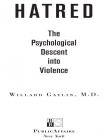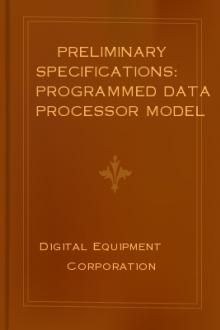Hatred, Willard Gaylin [best ebook for manga txt] 📗

- Author: Willard Gaylin
Book online «Hatred, Willard Gaylin [best ebook for manga txt] 📗». Author Willard Gaylin
During this same general period, England and Australia were also having problems with “mad bombers.” These cases particularly expose the specific role of polemicists in stimulating even the most psychotic. The ultimate responsibility for crimes committed by many psychotics must be shared by those who inadvertently or directly manipulate them.
Glynn Harding, a twenty-seven-year-old patently schizophrenic man from Crewes, England,45 sent dozens of potentially lethal mail bombs filled with nails and other forms of shrapnel in his defense of the rights of animals before he was apprehended. Psychotic bombers are notoriously difficult to apprehend. Their very irrationality contributes to this difficulty.
An article by Helen Carter in the Guardian, on September 22, 2001, took note of how tenuous was the association between Harding’s animal rights beliefs and his selection of victims. Try making sense of this list—even as part of an animal rights crusade. Harding’s first bomb was mailed to a firm that manufactured identity tags for farm animals. Successive bombs were sent to an agricultural real estate agent, a British Heart Foundation charity shop, a pet and reptile store, a sheep farmer, a cancer research charity shop, a poultry breeder, and a fish and chip shop. The youngest victim was a six-year-old whose father earned his living clearing wasps’ nests.
Nothing is more indicative of the fact that the victim is primarily a vessel to receive the internally manufactured hatred of the terrorist than the arbitrariness by which these victims were selected. Bombings like these are clearly hate crimes, but they have often been directed at people who are not actually members of the hated group. With Harding, the self-acclaimed animal rights crusader, his chosen victims were in no way connected with the use of animals for experimentation. Even when his crimes were directed at an animal research laboratory, the putative source of his anger, it would still not represent that which truly generated hate in Harding’s heart. The cause selected is a convenience for internal rage evolving over a lifetime of perceived deprivations.
Similarly in the long-standing Serbian-Croatian conflict, the civilians killed were usually just innocent neighbors. The slaughter required the abandoning of personal history and current reality. Innocent victims were viewed in continuity with the earlier atrocities committed in previous wars by previous generations often unknown to them. The most bizarre and cruel aspect of the dissolution of Yugoslavia was that both Serbs and Croats managed to put aside their historic hatred and join in massacring their Bosnian Muslim neighbors. The traditional hatred was Christian against Christian. But in the chaos of the dissolution of Yugoslavia and the land grab that ensued, the Serbs managed to displace their hatred to the convenient Muslims. The result was the massacre at Srebrenica, which rivaled those of the Nazis. In the world of haters, all victims are fungible commodities.
A legitimate cause rarely generates the kind of hatred that sacrifices the innocent. Hatred works in the opposite direction. The “cause” does not generate the rage. The rage demands locating a cause. Resentment at one’s lot in life—remembering that there need not be actual deprivation but psychological feelings of deprivation—generates a powerful rage that seeks a justifiable outlet. The animal rights movement and its heated rhetoric supplied Harding—a presumed animal lover, since there were many other causes available—with a convenient hook on which to hang the hate generated by his inner turmoil.
There was no doubt that Harding was a diagnosed schizophrenic. But the law, itself, is “schizophrenic” in dealing with heinous crimes committed by the psychotic. The judge, Elgan Edwards, called Harding’s actions “pure evil,” which raises question about moral judgments and moral responsibility with psychotic individuals. If a crime is obscene enough, if it offends public morality, there will be a tendency to refuse to acknowledge the nonculpability assigned to the insane under the definitions of the sick role. The easiest way to do that is to deny the presence of the illness. There is latitude in accepting the definitions, since criminal insanity and psychosis are not congruent terms. The presence of a delusional psychosis in a defendant is not sufficient to meet the standards of criminal insanity in most jurisdictions. That will demand, in addition to delusions, a proven inability to conform one’s behavior to standards of right and wrong.
A case with an even more confusing amalgam of motivating factors is that of Colin George Dunstan, a forty-four-year-old Australian, who started his rampage of letter bombing in 1998—at least according to one psychiatrist’s testimony—because of a psychotic depression after the breakup of his relationship with a coworker. But his twenty-eight letter bombs were sent to a variety of government agencies. While it is true that both he and his girlfriend worked for the Australian Taxation Office, he had a previous history of hatred, independent of any perceived abuses on the job. Since his trial, it has surfaced that he was linked to a right-wing antigovernment terrorist group, the Australian Nationalists’ Movement, one of whose leaders, Jack Van Tongeren, is serving an eighteen-year sentence for bombing five Chinese restaurants in Perth. Dunstan, I suspect, is closer to Timothy McVeigh, the Oklahoma City bomber, who exhibited fewer symptoms of psychosis, than to Kaczynski, who was almost a prototype of the schizophrenic. Hate crimes that seem crazy need not be the product of crazy people.
The general public overestimates the potential danger of psychotic patients. We tend to respond to the sight of deranged psychotic individuals with fear. This fear is sustained by the occasional act of irrational rage performed by a psychotic individual, often a street person. During the time I was writing this book, there were reports in





Comments (0)